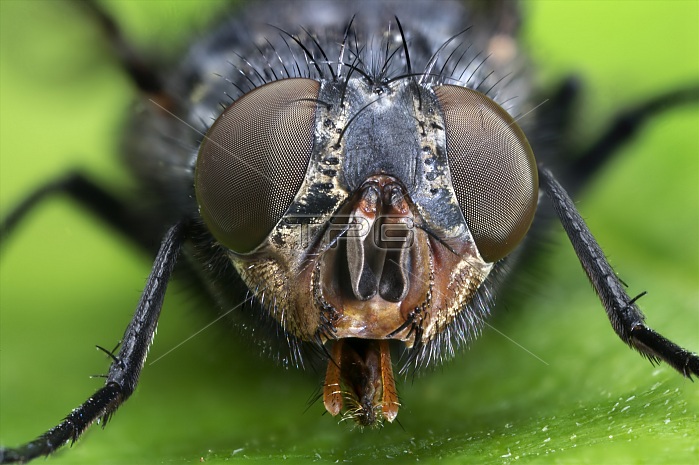
Common House Fly (also house fly, house-fly or common housefly), Musca domestica, is a fly of the Brachycera suborder. It is the most common of all domestic flies, accounting for about 90% of all flies in human habitations, and indeed one of the most widely distributed insects, found all over the world; it is considered a pest that can carry serious diseases.Each female fly can lay approximately 500 eggs in several batches of about 75 to 150. Within a day, larvae (maggots) hatch from the eggs; they live and feed on (usually dead and decaying) organic material, such as garbage or feces. They live at least one week. At the end of their third instar, the maggots crawl to a dry cool place and transform into pupae. Some 36 hours after having emerged from the pupa, the female is receptive for mating. The adults live from two weeks to a month in the wild. Houseflies feed on feces, open sores, sputum, and moist decaying organic matter such as spoiled food, eggs and flesh. Houseflies can take in only liquid foods. They spit out saliva on solid foods to predigest it, and then suck it back in. They also regurgitate partly digested matter and pass it again to the abdomen.They are capable of carrying over 100 pathogens, such as typhoid, cholera, Salmonella, bacillary dysentery, tuberculosis, anthrax, ophthalmia, and parasitic worms. The flies in poorer and lower-hygienic areas usually carry more pathogens. Some strains have become immune to most common insecticides.
| px | px | dpi | = | cm | x | cm | = | MB |
Details
Creative#:
TOP22049374
Source:
達志影像
Authorization Type:
RM
Release Information:
須由TPG 完整授權
Model Release:
N/A
Property Release:
No
Right to Privacy:
No
Same folder images:

 Loading
Loading